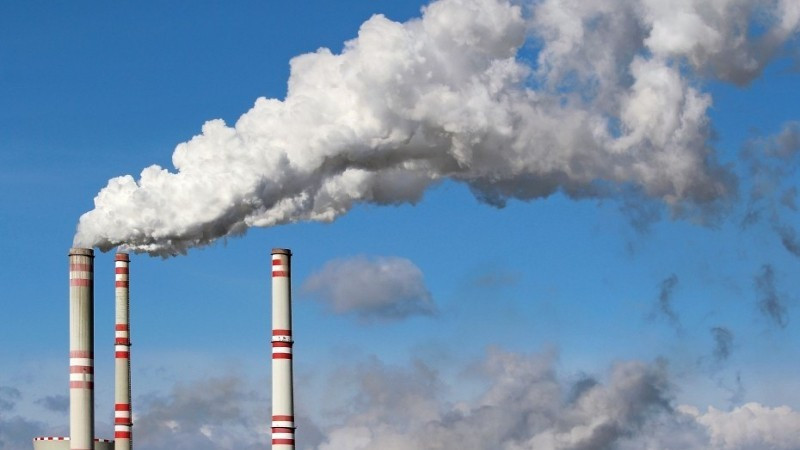“From science to global action” – 40 years of protecting ozone layer
September 16 each year has been designated by the United Nations as the International Day for the Preservation of the Ozone Layer. This year’s event carries special significance as it marks the 40th anniversary of the Vienna Convention for the Protection of the Ozone Layer, under the theme “From Science to Global Action”.

This is an occasion for the international community to look back on the achievements made and reaffirm the determination to continue working together to safeguard the Earth’s “shield”.
Viet Nam implements comprehensive measures to protect the ozone layer
Four decades ago, the Vienna Convention was established, paving the way for unprecedented cooperation in the field of environmental protection. On that basis, the Montreal Protocol was adopted, completely phasing out chlorofluorocarbons (CFCs) – once widely used in refrigeration, aerosols, and foam production – thereby making an important contribution to the recovery of the ozone layer.
In particular, the Kigali Amendment expanded the scope of control to hydrofluorocarbons (HFCs), a group of greenhouse gases with high global warming potential. Thanks to this, the Vienna Convention and the Montreal Protocol are regarded as among the greatest successes of global environmental cooperation.
Scientific evidence shows that the ozone layer is gradually recovering and may return to its normal state by the middle of this century. At the same time, the elimination of ozone-depleting substances also helps slow down global warming, as most of these substances are also powerful greenhouse gases. Studies estimate that without the Montreal Protocol, by the end of this century, the average global temperature could be about 0.5 degrees Celsius higher than at present.
To date, 99% of ozone-depleting substances have been eliminated globally. The gradual recovery of the ozone layer is clear evidence that when nations unite in action, seemingly insurmountable challenges can be overcome.
As an active member, Viet Nam has synchronously implemented measures to eliminate and control ozone-depleting substances such as CFCs, Halons, CTC, HCFCs, Methyl Bromide, and is gradually managing HFCs in line with the international roadmap. Viet Nam completely eliminated the consumption of CFCs, Halons, and CTCs as of January 1, 2010; phased out HCFC-141b in foam production in 2015; and only permits the use of Methyl Bromide for agricultural quarantine purposes.
The content on ozone layer protection has been institutionalised in the 2020 Law on Environmental Protection and various sub-law documents such as Decree No. 06/2022/ND-CP, Decree No. 45/2022/ND-CP, Circular No. 01/2022/TT-BTNMT, Circular No. 20/2023/TT-BTNMT, along with the newly promulgated Decree No. 119/2025/ND-CP. This legal framework facilitates enterprises while promoting the adoption of advanced, safe, and environmentally friendly technologies.
According to statistics from the International Ozone Secretariat, as of August 2025, Viet Nam has prevented emissions equivalent to around 240 million tonnes of CO₂. This is a remarkable achievement, demonstrating the country’s commitment to the Vienna Convention and the Montreal Protocol, and reflecting Viet Nam’s responsible contribution to global greenhouse gas reduction efforts.
In the coming period, under the National Plan for the Management and Phase-out of Ozone-Depleting Substances and Greenhouse Gases for 2024–2045, Viet Nam is expected to directly reduce over 11 million tonnes of CO₂ equivalent from HFC consumption. This further reaffirms the country’s determination to accompany the international community in the goal of achieving net zero emissions by 2050.
Comprehensive solutions needed for sustainable cooling
According to Nguyen Dang Thu Cuc, Deputy Head of the Department of Greenhouse Gas Emissions Management and Ozone Layer Protection (Department of Climate Change, Ministry of Agriculture and Environment), protecting the ozone layer not only helps close the ozone hole but also directly contributes to climate change mitigation, as many substitutes may cause greenhouse effects.
Cuc noted that Viet Nam’s major advantage lies in its participation in many international conventions, with a relatively comprehensive legal system including the 2020 Law on Environmental Protection, Decree No. 06/2022/ND-CP, and regulations on the carbon market, greenhouse gas management, and ozone layer protection. In addition, Viet Nam also receives support from the Multilateral Fund for the Implementation of the Montreal Protocol and international organisations to adopt technological conversions in the refrigeration and air conditioning sectors.
However, challenges remain. Some new refrigerants are flammable, posing safety risks, and require skilled technicians as well as proper systems for collection, recycling, and disposal. This necessitates close coordination between regulatory agencies, enterprises, and international organisations.
“To achieve long-term goals, we must promote sustainable cooling solutions – using energy-efficient equipment, selecting environmentally friendly refrigerants, and integrating passive cooling solutions into building design. This requires the coordination of multiple ministries such as the Ministry of Industry and Trade, the Ministry of Construction, together with proactive enterprises and international support,” Cuc emphasised.
According to Cuc, ozone protection activities in Viet Nam not only bring direct benefits to the recovery of the ozone layer but are also closely linked to national greenhouse gas reduction goals. This also forms the foundation for comprehensive green transition, enhancing competitiveness and international integration.
In response to this year’s International Day for the Preservation of the Ozone Layer, the Ministry of Agriculture and Environment has carried out various community communication activities, in coordination with scientific organisations and enterprises, to spread the anniversary’s message “40 Years of the Vienna Convention – From Science to Global Action”. Notably, the 2025 International Exhibition of Refrigeration and Air Conditioning introduced advanced, environmentally friendly technologies, aimed at sustainable development.








